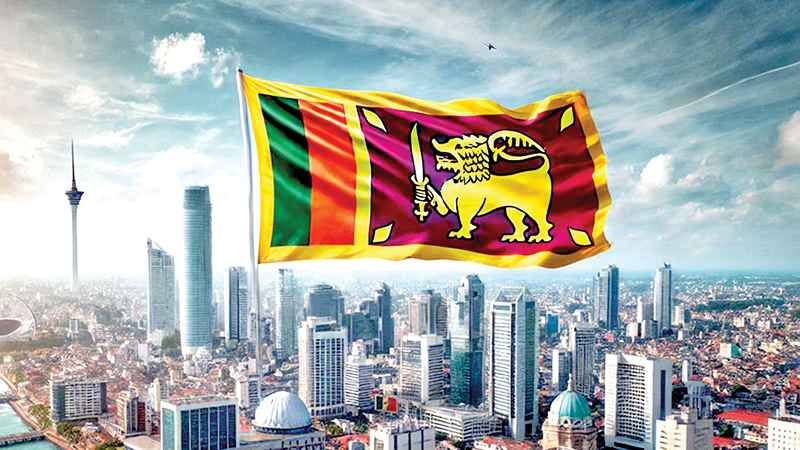 What’s more important than a mere assessment of what is in store for Sri Lanka this year, would be a sizing up of what is in store for the country and the world in the next 25 years at least.
What’s more important than a mere assessment of what is in store for Sri Lanka this year, would be a sizing up of what is in store for the country and the world in the next 25 years at least.
A preliminary analysis of what may portend in economic and political terms in particular in 2025, was made by this columnist on the editorial page of our sister publication the Daily News on January 1.
In a country that’s said to be on the threshold of major change, plans are necessary. South Korea made its giant leap forward with five-year plans, even though the slogan giant leap forward has Mao Tse-Tung connotations.
But a plan is a plan, whether it is hatched in a capitalist country such as late dictator Park’s South Korea, or in communist China under Chairman Mao. What is Sri Lanka’s plan for the next twenty-five years and would it be predicated on what’s planned for the next five years?
Imagine our problems of a hundred years ago. Under Governor Hugh Clifford, appointed by the then British monarch and despatched here under order of the colonial office, Ceylon was more interested in transport than its people. There was a robust clash between lorry drivers who used the shorter routes to Kandy and other hill country outposts to transport commodities for export, and the train service which could transport in bulk, but took longer than the lorry convoys.
Diseases such as Malaria were rife and the rural Ceylonese were existing on the crumbs that fell from the table of the coloniser Raj. But, who would have thought that exactly hundred years later, history would repeat itself, and the Sri Lankan middle-classes in particular would be looking for redemption from long years of economic marginalisation under ineffectual rulers?
INITIAL
Hundred years ago, the people looked forward to ousting an exploitative coloniser, and today they want to rid the country of the vestiges of exploitative class-stratified political hegemony of a dominant upper crust. At the quarter-century mark past the1900s, the British were so well-established in this country that there was no sign of the coloniser leaving anytime soon. But the British empire was facing challenges in all its colonies. Particularly in neighbouring India, a special brand of revolt was brewing, that eventually spelt the end for the British colonial domination.
We were essentially the beneficiaries, though that’s not to take away from the work of the national minded such as Henry Pedris, Anagarika Dharmapala, and those that constitute the pantheon of our national heroes. But it would be mere cliché to say the world is a far more complex place a hundred years later.
We are paddling our own canoe as opposed to 1925, when we, though exploited and cowed, had the British helming the ship of state. By contrast, as masters of our own destiny, we are in a world that is unrelentingly harsh when it comes to settling of debt, and other international transactions we are party to. There are no cheques despatched from the British foreign office, as there were to construct our railways, an undertaking for which most of the initial capital was raised in London.
This is by no means to romanticise colonialism, but merely to underscore the fact that in our post-colonial setting, we have no powerful underwriters such as those that kept the country financially afloat even as they exploited our people to the hilt. Hundred years later, therefore, the context is entirely different. We as Sri Lankans look forward to a different kind of independence, but this time too, it is freedom from the clutches of an external actor that is sought.
We seek freedom from our creditors. We also seek to be rescued from the maelstrom of international commerce that has brought our ship of state to the verge of capsizing in murky, choppy waters. In many ways the challenges we face are far more daunting than in the spacious era under a coloniser when we were backward economically, but relatively content.
But today, there is a burgeoning population to cater to, and land resources are stretched. It’s a radically transformed world out there since 1925, but what’s more, it’s also exponentially transforming, which means that our five years and ten year plans if any, have to look to ways of meeting potential future challenges more than meeting present ones.
For example, AI is fast transforming everything from global production, the labour market, and matters of trade. Structural deficiencies permeate our education and health sectors to a point that these have largely become dysfunctional. But most of these structural faults can be traced to one root cause, which is retarded economic growth.
Beneath all these fault lines are a powder keg in the form of a malcontent mass of people who have experienced several false dawns. So that is exactly where we are placed as we prepare to enter the second quarter of the 21st century, a place of cautious hope, leavened by the experience of a multitude of disappointments.
Emancipation
We were hoping similarly for emancipation — from colonial rule — a hundred years earlier, but that event eventually took place twenty-three years later, almost close to the mid-century mark in what would have been heralded initially as an era of great promise. Perhaps, this is why some recent leaders set 2048 as the year Sri Lanka would be redeemed; they borrowed from a playbook that was exactly a century old.
No, this country — in 2025 — absolutely cannot wait till 2048. Progress is not a mathematical numbers-game and just because we waited for independence until 1948, we cannot wait to be ‘developed’ until 2048. In any event, progress does not come because a time span is imagined. It comes through a vision and through innovation that is not time-dependent.
The first quarter of the 21st century was signified by teetering fortunes, we’d recall. We had so many ups and downs that the people wished they were out of that roller-coaster fast. We came through the slaughter of almost three decades, and ended a war in 2009, only to face economic catastrophe just 13 years later.
People expected the opposite after the morale sapping violence ended. But instead they faced fortunes that they had not encountered even in the worst years of war, in terms of chronic shortages, and galloping poverty, in the face of unprecedented economic angst. We cannot and should not plan for such failure, but if we plan for success we would probably avoid such calamities in the run up to the mid-century point, never mind 2048.
Planning is for the short term, but a vision is for a future built on such a short term plan. That’s how South Korea achieved its miracle transformation from backwater to powerhouse. No leader in South Korea got up one day to say, “We shall be a powerful economy by the year 1998.”
They planned and executed their plans meticulously in five and ten-year increments, so that the future until 1998 and beyond basically looked after itself. Even without an articulated plan, we can still make do, if we have a national sense of purpose, which would see us though our immediate difficult phases and launch us into a future of promise.
Plans? Some would say, the best laid plans of mice and men are better not spoken about. Not all plans go according to plan, to be horribly banal about it, but for the next twenty-five years at least, even if power changes hands, we need a consensus on our basic direction. The recently departed Manmohan Singh showed the general direction, in India as did J.R. Jayewardene with all his major flaws, decades ago in this country.
But after the affable Singh, it needed a more ruthlessly focused Narendra Modi to launch India on its current fast track towards growth and stability. We need a similar consolidation, which is what we have essentially missed in the serial false dawns since JRJ. Let 2025 which ought to be a landmark year by any reckoning, signify that dogged but longed for transformative phase.








